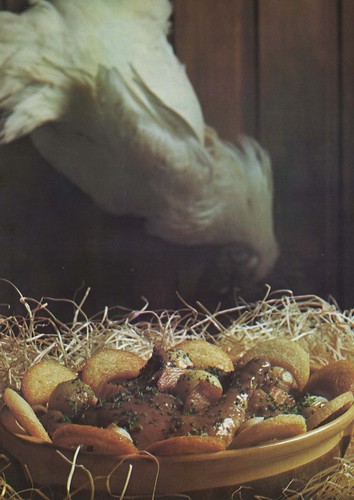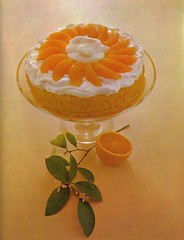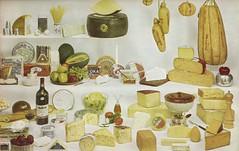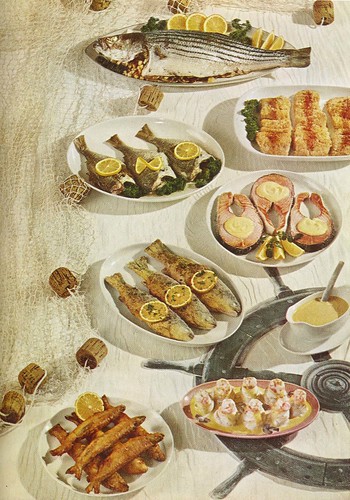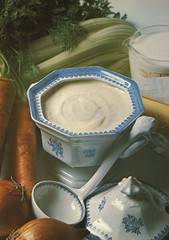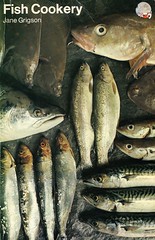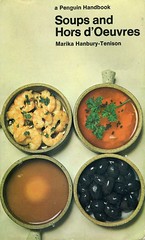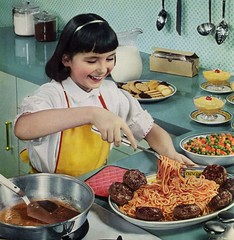 The General Foods Kitchens Cookbook
The General Foods Kitchens Cookbook, written by the women of General Foods kitchens (New York: Random House, 1959), has a chatty, helpful tone and an Eisenhower-America notion of normative race, gender and class that I would hardly bother mocking. Opening more or less at random I find this on page 49:
When there's a great stack of ironing to do, or you've promised yourself to clean out the closets, do you sometimes just open the refrigerator door at noon, grab the first thing you see, and gulp it down, so you can go on with what you're doing?
You're making a big mistake if you do. With your full and busy schedule, it's important for you to take time off in the middle of the day to relax and simmer down. Those few minutes will mean a lot to you after the baby wakes up from his nap, or the children come whooping in from school, or it's time to start dinner.
Well, who can argue with that?
The book's photos, when they contain human subjects, invariably portray girls and women cooking and boys and men consuming. The general feeling, as in so many of these books, is that taking care of the food is an essential mission that guarantees a person's proper femininity. I don't care for the ideology but at the same time I get a kick out of kids working in the kitchen.
Now the picture. I have always thought of spaghetti and meatballs as a quintessential 1950s dish but in this combination of pasta, red sauce, and meat the meat is cooked as burgers. I would never think of eating spaghetti with hamburgers or hamburgers without buns, but these old cookbooks remind you of how notions of what goes with what change over time. Alternatively, it could be "cute" that the kid prepares a dish that's a little bit funny. Or it could be that the people who wrote this book were wacky.
With the exception of the meat, the meal that the girl has prepared is virtually all "instant" in some way. The peas and carrots surely came from a can, the pudding from a mix, the sauce from a jar, the cookies from the box on the counter. One reason for thinking so is that there are no recipes to accompany the shot. It is assumed that the housewife will know enough about how to make these easy dishes to teach her daughter. I wonder if a cookbook today would get away with that.
There are several details I especially like in this image. One is the grease in the pan, as if to insist that the young model has actually sauted those patties just before arranging them in a circle around her platter of spaghetti. Another is the carving fork used to serve the pasta. And there's the color-coordination of the apron and the pudding, the pitcher of wholesome milk, the kid's rolled-up sleeves, her bright red smile...
The caption next to this photo on page 53 reads, "Let the children cook...its fun for them and a help to you. Start off with an easy menu...and just see them shine!"
(
food photography of yesteryear)
